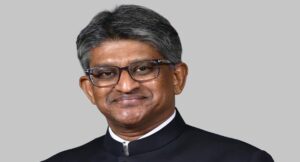As the Indian Premier League (IPL) 2025 gears up for its first ball, brands are already locked in an intense battle—not on the pitch, but in advertising. With record-breaking digital viewership and a shifting consumer engagement landscape, IPL’s marketing playbook is evolving. While some brands continue to pour money into traditional ad slots, others are rewriting the rules of sports marketing, proving that strategic placements can deliver stronger brand recall than big budgets. A new study by Crisp Insight + Kadence International has challenged the long-held belief that bigger ad spends guarantee better recall. IPL 2024 saw over 100 brands competing for visibility, yet only a handful registered with consumers.
Dream11, for instance, spent Rs 1,730 crore on ad placements and achieved a 37.7% recall rate. On the other hand, brands like Vimal and Parle spent significantly more—over Rs 3,000 crore each—but struggled to cross a 4% recall rate. The findings suggest that simply throwing money at advertising doesn’t necessarily translate to consumer awareness.
Strategic sponsorships
IPL 2025’s sponsorship landscape reflects a shift from traditional brand visibility to a more integrated marketing approach, where companies are embedding themselves deeper into the tournament ecosystem. The most notable change is the intensified competition in the beverage segment, with Reliance Consumer Products’ Campa Cola securing the Rs 200 crore co-presenting sponsorship—an aggressive move that places it directly against Coca-Cola’s Thums Up, which held the position in IPL 2024. The financial and digital payments sector also remains strong, with SBI, GPay, and PhonePe maintaining their presence, signaling the continued dominance of fintech brands in IPL marketing.
Fantasy sports and gaming brands such as My11Circle, PokerBaazi, and Dream11 continue to capitalize on IPL’s engaged fan base, reinforcing their association with the tournament. However, this season also sees a notable rise in consumer durables and FMCG brands, with companies like Asian Paints, Joy Cosmetics, Allen Solly, and Jaquar Bath + Light leveraging IPL’s mass appeal. Unlike previous years, where sponsorships primarily focused on television commercials and logo placements, brands are now diversifying their engagement strategies. Luminous Power Technologies, for example, is prioritizing digital activations, influencer collaborations, and real-time audience engagement over mass advertising, reflecting a broader shift in how brands approach IPL partnerships.
Another key trend is the widespread sponsorship distribution across multiple IPL assets. Instead of limiting investments to central sponsorships, brands are spreading their presence across team partnerships, in-game branding, stadium activations, and digital platforms. The emphasis has shifted from pure awareness-driven sponsorships to engagement-driven marketing, where brands aim for direct consumer interaction through social media, digital integrations, and region-specific campaigns
Reliance Consumer Products Ltd (RCPL) is using IPL to relaunch and establish its beverage brands, including Campa Cola, Campa Energy, Spinner, and Gluco Energy. By sponsoring six IPL teams, the company is betting on a combination of stadium presence, in-game branding, and social media activations.
“IPL is possibly the biggest sporting event in India with a massive reach, engagement, and interest levels, also the timing coincides with the beverage season,” sources from RCPL told FE Online. “We are doing far more than just advertising in IPL. There will be on-ground presence with visibility across six stadiums, product availability, and consumer engagement with region-wise influencers for better youth connect.”
“My11Circle’s five-year partnership as the associate partner of the TATA IPL allows us to build further on the immense enthusiasm for cricket in India, connecting with millions of passionate fans,” says Saroj Panigrahi, Chief Operating Officer, Games24x7. “Our comprehensive 360-degree marketing strategy—encompassing strategic partnerships both on and off field, including TV, digital, and beyond—is designed to amplify our brand and enhance user engagement throughout the IPL season.”
Luminous Power Technologies, an inverter and solar brand, is taking a different route, focusing on targeted engagement rather than mass advertising. With 96.5% brand awareness, the company is prioritising digital activations, influencer collaborations, and real-time audience engagement through a Digital Command Center.
“Our decision to associate with the IPL was driven by the sheer magnitude of its viewership and fandom,” says Neelima Burra, Chief Strategy Transformation and Marketing Officer, Luminous Power Technologies. “Beyond logo placements and title sponsorship, we’re leveraging IPL through a multi-faceted strategy, from retail activation programs that engage dealers, consumers, and distributors to digital engagement around key match moments.”
She adds, “Over the last two years, our association with IPL has shifted the perception of Luminous towards being a more stylish, fun, technology-driven premium brand. These gains, along with tangible metrics like revenue growth and market share, demonstrate the success of our strategy.”
Crackdown on surrogate ads
While brands are maximising IPL’s reach, the Union Health Ministry has once again directed BCCI to ban all forms of tobacco and alcohol promotions, including surrogate advertising. This means stadiums, IPL-related events, and television broadcasts will not feature ads from brands linked to tobacco and alcohol. Given the league’s history with brands using surrogate tactics, this directive is expected to impact advertising strategies for certain players.
What’s driving this shift?
Several factors are shaping the new IPL marketing playbook:
digital viewership boom – The rise of JioHotstar and CTV means more eyeballs on digital ads than TV commercials.
smarter ad placement – Non-FCT (non-traditional ad spots like sponsorships, team partnerships, and in-game branding) are proving to be more effective than expensive TV spots.
regional targeting – With Hindi-speaking markets driving 38% of digital viewership, brands are customising their marketing strategies for regional engagement.
performance metrics over vanity metrics – Instead of just tracking ad spend, brands are looking at deeper metrics like brand engagement, consumer interaction, and ROI.
Jiohotstar’s record-breaking run
If cricket is India’s biggest obsession, JioHotstar has become its digital stadium. The ICC Men’s Champions Trophy 2025 set new streaming benchmarks for the platform, with 540+ crore views and a staggering 11,000 crore minutes of watch time. Peak concurrency reached 6.12 crore viewers, highlighting the shift of cricket audiences from television to digital. With IPL just days away, this trend is set to continue.
Smart, not just big
The IPL battlefield has changed. It’s no longer about who spends the most but who plays the smartest. Digital dominance, strategic integrations, and consumer-driven campaigns are defining the new success formula. Brands that embed themselves into the consumer experience rather than just pushing ads are winning the game.
As brands fine-tune their marketing playbook, the real question isn’t about how much they spend, but how well they engage. The brands that prioritise consumer interaction, innovation, and authenticity will walk away with the biggest prize—lasting mindshare and brand loyalty. Financial Express









